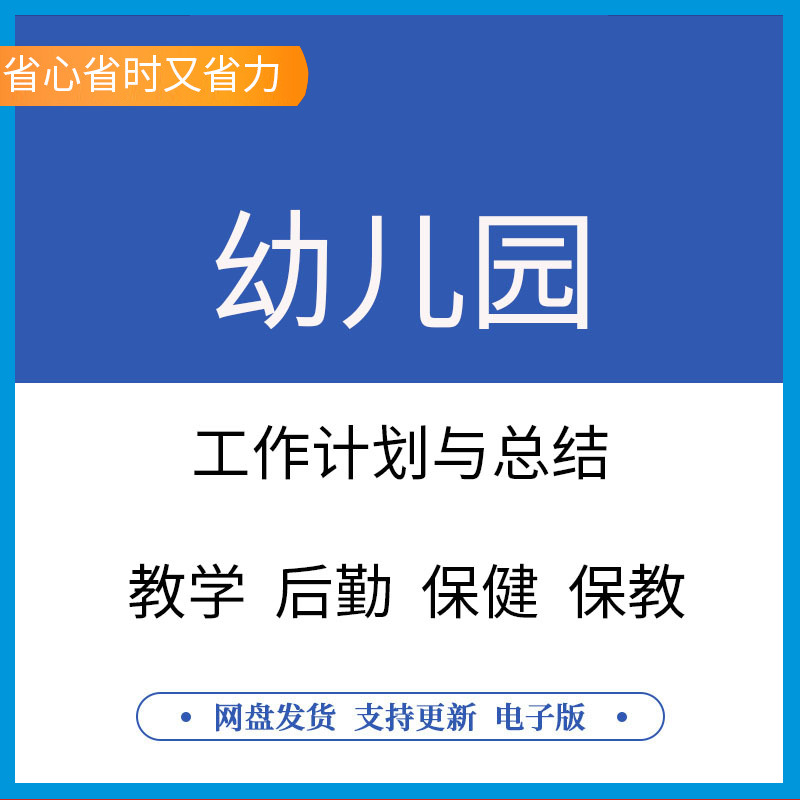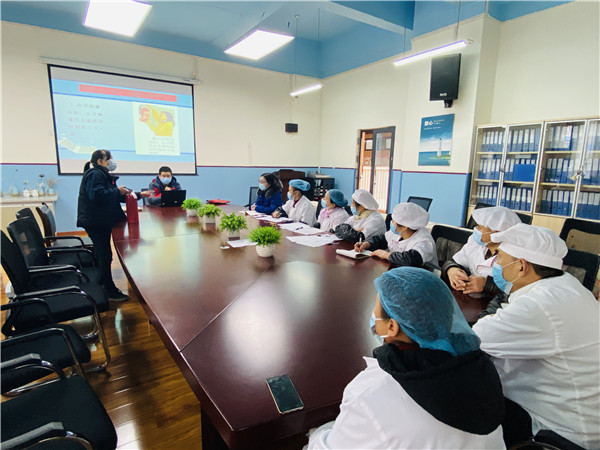校长助理的工作并不简单,每天也不乏要做的事情。 但看着孩子们天真的笑脸,疲惫总会随之消散。 以下是第一作文网小编为大家整理的一篇《幼儿园助理园长工作总结范文》。 仅供参考,欢迎大家阅读。
幼儿园园长助理工作总结样本(一)
忙碌的20xx悄然离去。 回顾这段时间的工作,我感到非常欣慰。 回顾这半个学期的点点滴滴,我受益匪浅。 回顾一个学期的工作,收获是快乐的、丰富的。 其中有教师队伍的完善幼儿园业务副园长个人工作总结,有孩子的健康成长,有家长对工作的认可,有幼儿园形象的提升,还有我在这个过程中得到的充分的锻炼和提高。 我也深刻认识到,我和幼儿园所取得的每一点进步,都离不开学校领导和老师的大力支持,离不开教学团队的团结进取,离不开家长的全力配合,离不开孩子们给幼儿园带来的欢乐。我。 和动机。
这几个月来,在熟悉幼儿园各项工作的基础上,我认真了解了我们幼儿园的工作思路和学校的办学精神。 我们的工作职责是:尽全力为孩子提供优质的保育和教育,解决家长的后顾之忧,让孩子健康快乐,让家长安心。 本学期,在学校领导、老师们的大力支持下,为孩子们营造了一个安全、卫生、舒适的生活环境。 在全体工作人员的共同努力下,孩子们取得了优异的成绩。
幼儿园里的许多任务都是繁琐而微小的。 幼儿园的日常工作关系到幼儿的健康成长。 学习区和生活区均在幼儿园内。 凡事都是小事,凡事都是大事。 因此,不断提高幼儿园的质量和服务水平,使幼儿园能够规范运作。 更进一步,是我努力的方向。
本学期个人主要工作总结如下:
1、协助校长落实各项规章制度,建立正常的工作秩序,定期检查、指导、考核和评价教职员工的工作。
2、协助园长落实幼儿园的双重任务,端正幼儿园的方向,明确全体幼儿的培养目标,全面提高幼儿素质。 重点关注幼儿教育、安全、保健和品格习惯培养,加强双语科学研究,不断提高幼儿保育质量。
3、负责幼儿园教育工作。 熟悉各年龄段儿童的生理、心理特点,熟悉幼儿园各年龄段的教学内容和要求,定期检查教师的月计划、周计划、教材编写、教育笔记和案例记录,定期衡量效果孩子们的教学情况,并保存记录。
4、负责组织教师专业学习,提高教师专业能力。 指导教师开展幼儿教育改革和科学研究。
5、协助主任建设职工队伍,做好职工政治思想工作,关心群众生活,听取群众意见,支持群众开展各项有益的活动文化和体育活动。
6、协助园长制定并审核各班级学期工作计划,上课时遵守幼儿园副园长的职责。
7、负责整理教师业务档案和教材,指导保育人员及时采购玩具、材料、教具。 组织幼儿人员出国参观学习,组织幼儿园内各类活动。
虽然开学以来我一直很忙碌,但是我却很充实。 尽管我在工作中尽了最大的努力,但仍然存在不尽如人意的地方。 但在忙碌的工作中我仍然感受到了领导的信任和老师们的理解和支持。 ,我要争取更大的进步,更好地服务社会、家长和孩子。 展望新的一年,我充满憧憬和希望,因为我看到了努力的回报,感受到了领导父母的期望。 我一定会不断总结经验,以更好的姿态投入到新的20xx年,找到进步的目标,不断进取,使幼儿园朝着更高的目标发展。
幼儿园园长助理工作总结样本(二)
担任校长助理以来,我在工作中尽职尽责。 现将我这段时间的工作做一个总结。 总结如下:
1、端正思想,找准定位,协助主任做好工作

认真学习政治理论,不断提高思想觉悟。 热爱幼教,严格要求自己,恪守岗位职责。 幼儿园的工作繁琐、规模小。 在团队成员中,我明确了自己的角色,分工明确,互相沟通。 除了管理我所负责的托儿工作外,我还协助校长处理其他工作。 我从不推卸这样的事情,始终把自己放在第一位,站在大局上,尽力发挥好副职作用,尽量减轻校长的工作压力和负担。 同时与后勤园长、高级科室领导一起协助做好幼儿园的全方位管理工作。
2、不断充实、努力进取、提升自身内涵
你的一生要扮演很多角色,还有很多事情等着你去做。 我感觉自己既是一名经理,又是一名老师,也是一名学生。 行驶在信息高速公路上,我深深地感到自己是如此的贫穷,记忆力不够。 为了扮演多种角色,我告诉自己:知识必须向更广泛的领域拓展,业务必须向更深的方向延伸。 因此,我经常在工作之余学习《幼儿教育博览》《幼儿教育研究》《幼儿教育》《管理创新》等书籍。 每当我读到一些令人兴奋的东西时,我都会将其与自己的作品进行比较并寻找差距。 不断丰富和更新自己的管理理念,调整自己的工作方法,在一线理论联系实际,大胆尝试,努力探索新的教育理念和模式,并运用到指导过程中,不断提高自己的专业水平。 。 在今天的课程改革中,我们都有烦恼和困惑,抓不住课程,抓不住孩子,抓不住预测和生成……每当我困惑的时候,我就看书,查资料,询问,讨论,通过多渠道的学习反思并与老师一起解决一些实际的困惑和问题。 我也抓住出国留学的机会,听专家讲座,感受新的教育理念,通过各种渠道不断充实自己,让自己在学习中不断成长。 多次负责指导各级各类公众观察活动。 他在指导工作中一丝不苟、尽心尽力,赢得了观察员的一致好评。 获县“我与新课改”征文比赛二等奖; 《让幸福活在孩子心里》一书在德华教育出版,《头晕的小鸡》被编入市《教育科研征文集》,《感怀卵石过河》被编入市《教育科研征文集》。被教育局“收藏”,《关爱爱,让爱成长》在报上发表。
三、互相学习、互相帮助,加强培训,促进教师成长
我们幼儿园的一些老师是调任不同岗位的新老师。 教师专业素质和业务水平参差不齐。 为了提高教师自身的专业素质和专业技能,我把新教师的培养列为园本教研的重点任务,并采取了以下形式。 培育:一是加大引导力度。 听课观摩80多个班级,特别是对新老师,进行跟踪指导。 每节课结束后,他们在肯定自己优势的同时,还注重周到的帮助和耐心的指导,力争使每位老师通过课堂实践提高基本功。 。 二是加大入园培训力度。 立足幼儿园,开展自我培训活动,充分利用老教师人才资源,采取“新老教师结对帮扶”的形式,通过幼儿园为基础,形成老教师引领新教师。培训、岗前培训、在职培训等多种渠道强化培训,在良好的氛围中,通过学习-实践-反思-再实践的螺旋形式进行,产生了内部培训效果并取得了良好的成绩。 我园“以园为本教研”得到了姐妹园的充分肯定。 三是注重群体素质提升。 为使教师实现专业成长,为教师“压担子”,开展不同的专业培训活动,鼓励教师积极参加各级各类技能竞赛,如:精品课评比、项目展示等安排了活动、自制教学玩具评价、环境评价和定期评价月等活动,让优秀教师脱颖而出。 我们幼儿园老师、老师在全体老师的共同努力和老老师的热心帮助下,新老师态度诚恳,虚心学习,努力进取。 如今,从小学转来的教师对幼儿教育不再陌生,我们的师资队伍也在不断壮大。
幼儿园副园长工作总结范文(三)
XX年5月我被任命为“校长助理”。
到达幼儿园后,按照安排协助园长开展各项工作。
一年来,我始终坚持认真学习新的业务理论知识,不断探索新的工作思路,处处严格要求自己。 我工作勤奋、勤奋,不仅丰富了我的教育教学经验,也提高了我的幼儿园管理能力。 现将一年来的工作情况报领导回顾:
1、带头爱岗敬业,以身作则。 在日常工作中,我时刻严格要求自己
思想上幼儿园业务副园长个人工作总结,努力加强政治修养,不断提高思想觉悟; 在学习方面,学习教育教学方面的专着、杂志,写读书笔记,不断提高自己的理论水平和工作能力。 在工作作风上,任人唯贤,平等相待,与人为善,集思广益; 在幼儿园管理工作中,有事业心和责任感,有比较清晰的工作思路,有开拓创新意识,有克服困难的信心和决心; 工作态度上,能恪尽职守,勤勤恳恳,与老师同甘共苦,共同进步,从不迟到,早退,最早到园,最晚离园。每天。 他以诚实的待人态度、踏实的工作作风、认真负责的工作精神,为全体师生树立了榜样。
2、全心帮助、服务好、当好顾问
1、协助园长制定幼儿园发展规划和学期、学年工作计划,并组织和监督规划、计划的实施; 定期进行工作总结,提出改进工作的措施和合理化意见,为幼儿园的发展提出建议; 协助校长制定教师培训计划、确定培训对象和业务考核工作。
2、在教学管理方面,我全力协助教务处的工作。 严格执行国家课程计划,协助教学办公室加强教学日常管理。 在强化质量的同时,我们还建立健全了教学督导体系: 课堂出勤和评价系统。 b. 定期和不定期检查备课制度。 c.数量监控系统。 这些科学规范的管理体系有效保证了我园的教育教学质量,获得了极高的社会评价。
3、在其他工作中,听从领导的安排,积极参加各项活动。 哪里需要我,我就会出现。 去年教师节,我参加了教师节亲自表演的小品哑剧《抢资料》。 让不少观众笑出牙,伤着肚子; 本学期伊始,我参加了县委宣传部主办的“X”活动。 大赛”并荣获“二等奖”,为教育系统争得了荣誉;在庆祝六一儿童节活动中,编排了舞蹈《采蘑菇的小女孩》并表演了双人舞《听我说》;积极参与教育局组织的各类活动 活动:写作文《妈妈,回来吧》,征集作文《学雷锋树立新教风》;为了加大幼儿园工作的宣传力度,我抽出了时间百忙之中抽空写新闻报道,本期共发出40条信息,其余文章资源最丰富,点击率最高,评分最高,是幼儿园宣传网站中的好文章受到幼儿园领导的好评,同事的好评,这项工作的每一点都付出了我很大的心血,但我无怨无悔。
每次活动中,我都主动承担起“录像”的任务。 经常下课后,站着的时候腿会发麻,拿相机的手也会发软。 下课后,我会和老师坐在一起,观看讲师的精彩表演,并提出一些建议。 一些合理的建议,我暗暗高兴看到老师们不断成长。 在教学实践中,我严格要求自己,坚持“教学”中“研究”,“研究”中“改革”,“改革”中“提高”。
不断反思教学得失,不断完善教学方法,不断总结教学经验。 在xx镇“课堂培训”活动中,经过各级的角逐,我们最终荣获xx镇“课堂培训”幼儿园组“第三名”。

3、工作中的不足
1、在管理过程中,遇事容易不耐烦,与他人沟通较少。
2、不善于从管理角度考虑全局。
3、缺乏系统的幼儿园管理知识、有效的管理方法和管理策略。
4、未来努力方向
1、多学习,勤奋积累,不断提高专业知识,不断优化教学方法,不断提高管理能力。
2、多总结,勤反思,力争把各项工作做实做实。
3、多沟通,善于社交,积极构建和谐幼儿园。
一年来,虽然工作繁杂,但正是这些繁琐复杂的工作,提高了业务素质,锤炼了意志,增强了幼儿园管理能力。 在今后的工作中,我将化压力为动力,加倍学习,积极进取,与时俱进,开拓创新,以最饱满的热情投入到工作中,以最好的成绩向祖国和人民汇报。
幼儿园副园长工作总结范文(四)
以幼儿园规划为指导,全面解读领会《幼儿园教育教学指导纲要(试行)》教育精神,坚持加快发展主题,以改革创新为动力,以科学管理为手段在幼儿园领导的关心和关怀下,全体后勤人员在工信部的指导下,本着团结、协作、友爱的精神,认真完成各项任务。
1、校园建设
1、根据园区发展规划,配合做好园区拆迁、扩建的前期准备工作。
2、后勤部门利用节假日和周末,有计划地完成了旧教学楼三楼平台封闭的栏杆; 对多功能厅的室内装修进行了改造; 粉刷了卫生室、隔离室、部分教室、午睡室、走廊; 并涂漆栏杆和楼梯扶手; 食堂污水管道改造。
2、物流团队建设
1、坚持保育员每隔一周学习劳动制度。 本学期,我进一步学习了《新纲要》精神、幼儿教育杂志上的教育经验介绍、《幼儿机构常用物品消毒常规》和《儿童常见传染病防治》护理机构”(流感、腮腺炎); 学习印发《关于做好中小学安全工作的紧急通知》,通过学习、跟踪指导、观摩交流、讲经验、知识竞赛、制作益智玩具等多种形式的活动,等,逐步提高幼儿工作者树立正确的儿童观和教育观的能力,进一步提高幼儿保育和教育水平。
2、根据后勤工作需要,不断挖掘保育员中的积极因素,成立“班组长”,以良好的氛围和精神,扎实做好日常的轮班分配、消毒等保育工作。团结协作。 。

3、进一步规范和落实“日常标准操作”,要求卫生医生对幼儿保育员进行辅导和培训,通过实际操作、观察、交流加大监督检查力度,让每个幼儿保育员都能清楚地了解“日常标准操作”。标准操作》的要求,按正确比例使用。 本学期9月底,“市卫生局、市生育保险所”对我园“保健工作”进行了抽查,得到了领导专家的一致好评。
4、根据本学期实际情况,由于幼儿数量增加以及各年龄段烹饪要求不同,增加了食堂工作人员数量,并根据情况调整了人员配置和分工。 “新与旧”的结合。 组织食堂员工学习明确《食堂工作人员岗位卫生责任制》《粗加工岗位卫生责任制》《配菜岗位卫生责任制》《炊事做饭卫生责任制》 “餐具消毒岗位职责制”。每周邀请勺师傅参与制定下周的“儿童菜谱”,共同讨论菜品的刀法、颜色、味道,制作菜肴更适合并受幼儿欢迎。
5、加强食堂食品卫生和规范操作的指导、监督和检查。 组织食堂工作人员学习《食品卫生法》和《关于做好中小学校安全工作的紧急通知》,进一步明确各岗位职责,规范日常操作,把儿童的安全健康放在第一位。
3、物业管理
1、认真执行上级文件,采购千元以内的物品由园委会讨论批准,千元以上的物品由园委会讨论批准,然后填写审批表,并到指定的政府采购点进行采购。
2、开展项目管理日常工作。 除按规定日期领取物品外,对于园区内的各种公共活动,可根据教师的需要及时提供所需的材料或物品。 坚持勤俭办园的原则,坚持园区“购物申请”制度,充分发挥有限资金的作用。
3、做好物品配置,提高园区资产周转利用率。 做好托儿费结算并向家长公布; 做好幼儿用品发放工作; 并保留孩子下学期要用到的物品。
4. 安全
1、期初后勤部与全体教职员工签订了《安全目标责任书》,进一步强化教职员工的安全意识。
2、进一步加强食堂采购检查验收。 实行儿童食品专人采购,完成食堂采购登记。 经检查不合格的,不得加工供幼儿食用。 订购零食、熟食时,应向食品单位索取相关卫生许可证和营业执照。
3、坚持每月对户外大型活动器材、电气设备、班级设施进行检查,发现问题及时记录,并请专业人员进行维修,延长设备使用寿命。 学期末,做好园区、班级设备的维护和保管工作。
4、定期督促门卫人员值守,安全、正确使用CK报警器,并做好记录。 定期检查CK使用记录,发现问题及时报告和处理,促进安全防范措施更好发挥作用。
5、本学期灭火器检查一次; 进行各种维修30余次; 大型户外玩具多次被检查; 经常提醒教师和后勤人员增强安全意识,加强安全防范,使安全工作深入人心,转化为实际行动。
5. 医疗保健
(一)填写托儿机构卫生保健台账
1、科学合理制定食谱并及时完成营养分析
严格遵循妇幼保健所规定的六大营养素:蛋白质、脂肪、碳水化合物、维生素、矿物质、水以及每个孩子每日的摄入标准。 根据季节特点,综合考虑经济性、营养性、可操作性等因素。 ,制定适合孩子口味、有助于孩子消化吸收的食谱。 每天观察孩子的饮食习惯,调整食谱。 每月按时完成一次营养分析,召开膳食委员会会议,公布营养分析结果,听取各方意见,不断提高菜谱质量。

2、晨检及全天观察记录
认真落实晨检制度,做到“一摸、两看、三问、四查”,判断儿童健康状况,及时筛查患有传染病的儿童。 如发现患有传染病的孩子进入幼儿园,将立即进行隔离观察,并通知孩子家长。 对班级进行消毒以防止疾病传播。 对于普通轻伤患者,认真询问后做好记录,并给予必要的护理和关注。 按时给孩子喂药,喂药时核对班级名称。
3. 完成体检并进行评估
学期初,领取新生体检卡,认真核对登记。 9月份,园区内所有老学生的体重将按照世界卫生组织标准进行测量和评估。 上学期筛查中发现的肥胖儿童将继续接受管理,直至结果出来。 筛选出肥胖和体弱儿童并建立个案。 本学期有一个体弱的孩子和一个肥胖的孩子。 每月测量和评估生长发育指标,采取相关措施进行纠正,并联系家长进行教育。
(二)健康教育
1、根据每个年龄段的不同认知水平,为孩子选择通俗易懂的教材,每月为孩子提供一节健康教育课。
2、每月更换保健宣传窗口,进一步向家长宣传科学育儿知识。
3、认真开展爱国卫生工作,台账信息完整规范,服从街道、社区管理,随时接受检查,确保幼儿园卫生达标。
本学期,我们后勤部的工作人员在校长、书记的带领下,认真、踏实地完成了各项任务,但还存在不足,有些工作需要下学期继续完善。 让后勤工作真正发挥绿叶作用,配合各部门把幼儿园建设得更好。
幼儿园副园长工作总结范文(5)
本学期的后勤工作,在园区管理部门的关心和支持下,牢固树立健康第一、预防为主、防治结合、加强教育的思想,采取了一系列有效的形式和措施,认真落实后勤工作计划。 通过共同管理,营造幼儿园全体工作人员关心、支持幼儿园后勤工作的局面,从而保证幼儿园幼儿的健康成长。 现将本学期的后勤工作总结如下:
1.健康检查工作
严格执行健康检查制度。 本学期共有幼儿674人,新入园幼儿78人。 我们做好了新生入园幼儿的体检工作,做好了健康档案的建立工作。 幼儿园体检率达到100%。 本学期5月份,市妇幼保健部门对幼儿园所有幼儿进行了体检,幼儿园体检率达到100%。
严格执行晨检制度。 晨检时,我们注重“看”、“摸”、“问”,发现问题,及时处理,做好记录,确保每天进出园幼儿的健康。 要及时掌握患病孩子的情况,并在晨检后将反馈情况汇报给班级,以便班主任对患病孩子进行特殊照顾。 托儿所工作人员会及时将孩子的情况反馈给当天的健康医生,以便进行全天观察。
2、疾病预防措施
本学期,我们严格执行制度,坚持预防为主。 根据不同季节,定期对幼儿园内幼儿活动、生活的场所和物品进行消毒。 保持开窗通风,每天为孩子提供干净、安全的生活空间。 冬春季呼吸道疾病高发季节和流感防治期间,特别是手足口、流感防治方面,我们积极采取有效措施,加强流感疫情防控。 我们建立了缺勤监测、报告和管理系统来监测缺勤儿童。 回家了解缺勤原因,对有感冒发烧的孩子进行观察和隔离,主动向家长解释,取得家长配合。 同时,他们增加预防用药,加大消毒密度和力度,每天对家长进行指导。 上级部门坚持零报告制度。 配合防疫部门完成国家规定的计划免疫工作,对儿童接种疫苗进行登记和管理,对漏接种儿童及时开展宣传动员工作,确保每一个适龄儿童都能得到接种按时接种疫苗,确保计划免疫率达到国家要求。
认真筛查体弱肥胖儿童,对容易发生肥胖的营养不良、体弱肥胖儿童进行病例管理,从运动、膳食等方面对日常活动进行针对性干预,并及时与家长交换意见,让家长了解情况meaning of management and make it a true mutual cooperation and joint management. We promptly communicate with parents about diseases and shortcomings discovered in children's physical examinations and carry out standardized corrections. The disease correction rate reaches 100%.

3. Nutrition and dietary management
1. Formulate and publish recipes every week. When formulating nutritional recipes for children, formulates recipes suitable for children's growth and development needs based on their age characteristics and market supply. Weekly recipes are made by 2-3 parents of a class who come to the kindergarten and work with the health teacher. In order to change the diversification of children's meals, give full play to the role of parents, listen to parents' opinions, feedback to parents the results of children's nutritional analysis, and discharge Better recipes. At the same time, I also learned from parents how to make several dishes that children like to eat. Let parents participate in managing and supervising children's meals.The purpose is to publicize nutrition knowledge and let parents and caregivers understand the importance of dietary nutritional structure and dietary nutritional balance to the growth and development of children, so as to achieve support and coordination of dietary work.
2. The purpose of the dietary nutrition survey is to understand the dietary situation of young children and each person's daily intake of various nutrients. Combined with the physical examination results, the purpose of assessing dietary nutritional levels is to provide scientific basis for improving dietary quality and improving children's nutritional status. The survey method is to use scientific and precise weighing method. Of course, it can also be supplemented by other methods, such as accounting and inquiry methods. The weighing method is to weigh three weights of various foods meal by meal, namely the net weight of raw food, the weight of cooked food and the weight remaining after eating by young children, and then calculate and compare them with the nutritional supply standards. Use the survey results as a basis for formulating reasonable recipes for young children.
3. Strengthen the theoretical guidance on balanced nutrition and diet, and provide guidance on nutritional and balanced diet knowledge to kindergarten teachers, cooks and canteen managers, so that the whole kindergarten understands the importance of nutrition. Especially canteen staff, their understanding of nutritional knowledge is directly related to the implementation of nutritionally oriented recipes. Therefore, nutrition knowledge training activities are carried out regularly for them, and they are required to strive to achieve complete color, aroma, taste, shape and quantity when cooking nutritious meals for young children. Carrying out fair competition assessment activities among canteen staff is the key to solving the contradiction between children's dietary nutritional requirements and the quality of canteen work, and is also the key to implementing scientific management of nutritional meals in kindergartens. The specific method of our kindergarten is: this semester, the canteen staff will be assessed. The leaders in charge will look at the food in the canteen every day and make comprehensive scores in terms of color, aroma, taste, shape, quantity, etc. From the perspective of the operating standards of canteen personnel and the hygienic conditions, the result of implementing scientific management of canteens is: children are happy, parents are reassured, caregivers are happy, canteen staff are comfortable, and leaders are relieved. Meal group meetings are held every month this semester to listen to opinions from various departments and improve children's recipes so that recipes are not repeated every day and are innovative every week. Supervise and urge food expenses to be earmarked for special use, the profit and loss of food expenses shall not exceed 2%, and accounts shall be posted and published every month. Use calculation software to calculate the nutrition of children's recipes every month, and propose analysis and improvement measures.
4. Cultivate children to develop good eating habits: before meals, our teachers will educate children on nutritional knowledge based on the dishes of the day to reduce the occurrence of partial eclipses in children; during meals, children are required to quietly finish their portion of the meal, etc.; After meals, children are required to clean and tidy up the table by themselves, placing dishes and chopsticks gently; and develop the good habit of rinsing mouths and wiping faces after meals. Provide children with boiled water of appropriate temperature at ordinary times to ensure that children have free, safe and hygienic drinking water throughout the day.
4. Sanitation and disinfection work
To do a good job in the indoor and outdoor environment of the kindergarten, we require the childcare teachers of each class to strictly follow the system, implement fixed personnel and fixed positions, and perform tasks according to the beautification, purification, greening, and child-friendly characteristics of the kindergarten. A small sweep a day and a big sweep a week to maintain the same quality inside and outside the kindergarten. Regular cleaning, regular inspections, the logistics principal will conduct monthly inspection activities, promptly point out problems found during inspections, urge corrections, and promote a clean and tidy kindergarten environment.
Disinfection work is the guarantee of children's health. The health room often instructs the nursery staff and canteen staff on disinfection work, so that the nursery staff can fully understand the disinfection methods and perform standardized operations when distributing meals. Children's daily and school supplies are disinfected and cleaned in strict accordance with disinfection regulations, and the childcare staff of each class keep disinfection records. The toilets are flushed with disinfectant every day to ensure there is no urine stain or odor.
Canteen staff strictly implement food hygiene standards, and food and utensils are handled and stored separately according to raw and cooked food, which effectively avoids cross contamination. The strict disinfection system insists on disinfecting children's tableware after each meal, which effectively avoids cross-infection caused by children through tableware and ensures the health of children in the kindergarten. In order to prevent the disease from entering through the mouth, the health center has strengthened food hygiene management and urged canteen staff to pay attention to personal hygiene habits, cut nails frequently, wash hands with running water before meals and after using the toilet, and wear work clothes and hats when working. Rinse the canteen every day, keep the stoves, tableware, and utensils clean on a regular basis, conduct thorough cleaning every week, and carry out mosquito, fly, cockroach, and rodent eradication work from time to time to ensure the hygiene and safety of children's diet.
5. Safety and health education and inspection
The kindergarten department conducts regular safety inspections on large and medium-sized toys and indoor and outdoor facilities, promptly registers and reports any problems found, and urges relevant personnel to carry out renovations to ensure the safety of the children's activity environment. In daily life, educational staff can also tighten the string of safety at all times, effectively preventing accidents from happening. We also used all favorable opportunities to conduct safety education for children and cultivate their awareness of self-protection. We conducted "emergency evacuation drills" this semester. Each class also conducted safety education based on the characteristics of the class and the age characteristics of the children. We have a strict medication administration system for children. All medications brought by children must be filled in by parents in the "Drug Entrustment Record", indicating the name of the medication, the time of taking the medication, the method of taking it, the name of the child, and any history of allergies. The parent should also sign and prepare the medication when taking the medication. Check the work and make sure it is correct before taking it.
Strengthen teachers' safety awareness. Preventing problems before they occur is the best guarantee for safety work. The kindergarten department attaches great importance to kindergarten safety work and has established a kindergarten safety leadership group and safety accident emergency plan. At the beginning of the school year, safety responsibility letters are signed at every level, and complete work plans are formulated for every class. , Safety must be emphasized in sewing meetings, safety education and preventive measures must be in place, regular personnel should be appointed to conduct safety inspections, and safety hazards can be eliminated in a timely manner. This semester, various safety systems and plans will be improved. Always pay attention to food and dietary safety, promptly resolve existing safety hazards, and effectively ensure the safety of teachers and students. Strengthen the supervision of teachers and conduct regular inspections and assessments in each class. In conjunction with the occurrence of vicious campus incidents that shocked the country, we strengthened our awareness, strengthened guidance in the morning, noon, and after school time, implemented the establishment of pick-up and drop-off cards for children, strictly guarded the door, and registered all visitors to prevent accidents.
6. Health promotion and parent contact work
Carry out health education based on seasonal changes and the health status of children's development. We use one-day activities as a position, the kindergarten newspaper "Rainbow Bridge", parent garden, publicity window, and website as windows to timely publicize safety knowledge from different angles. This semester In view of the high incidence of hand, foot and mouth and influenza A h1n1, targeted publicity on influenza prevention was carried out, which effectively improved the safety awareness of childcare staff and parents.
7. Other work
Study seriously, innovate boldly, often consult superior maternal and child health departments, and accept their guidance humbly. Pay attention to improving one's own quality, actively participate in special health training of superior professional departments, accept new information and new requirements, improve one's professional level, and cooperate with various health prevention and control agencies to complete work. Complete the registration statistical analysis and evaluation work of various account books and cards of child care in accordance with the requirements of the regulations. Ensure that the health and safety work in the kindergarten is carried out in an orderly manner.
We are clearly aware that kindergartens are facing challenges in the new century. In order to truly adapt to the needs of the development of the new situation and to be able to gain a foothold in the fiercely competitive environment, we must continue to work hard. The above is a summary of the work of this semester. I will humbly accept everyone's opinions on the work and work together to make our garden's logistics work better.
